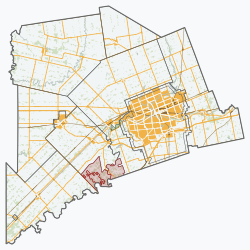
The Tuscarora are an Indigenous people of the Northeastern Woodlands in Canada and the United States. They are an Iroquoian Native American and First Nations people, based in New York and Ontario.

The Mohicans are an Eastern Algonquian Native American tribe that historically spoke an Algonquian language. As part of the Eastern Algonquian family of tribes, they are related to the neighboring Lenape, whose indigenous territory was to the south as far as the Atlantic coast. The Mohican lived in the upper tidal Hudson River Valley, including the confluence of the Mohawk River and into western New England centered on the upper Housatonic River watershed. After 1680, due to conflicts with the powerful Mohawk to the west during the Beaver Wars, many were driven southeastward across the present-day Massachusetts western border and the Taconic Mountains to Berkshire County around Stockbridge, Massachusetts.

The Wyandot people are Indigenous peoples of the Northeastern Woodlands of North America, and speakers of an Iroquoian language, Wyandot.

The Lenape, also called the Lenni Lenape and Delaware people, are an Indigenous people of the Northeastern Woodlands, who live in the United States and Canada.
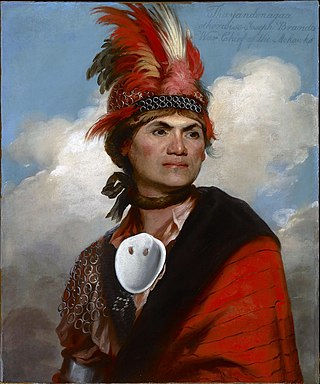
The Mohawk people are the most easterly section of the Haudenosaunee, or Iroquois Confederacy. They are an Iroquoian-speaking Indigenous people of North America, with communities in southeastern Canada and northern New York State, primarily around Lake Ontario and the St. Lawrence River. As one of the five original members of the Iroquois League, the Mohawk are known as the Keepers of the Eastern Door – the traditional guardians of the Iroquois Confederation against invasions from the east.
The Seneca ( SEN-ik-ə; are a group of Indigenous Iroquoian-speaking people who historically lived south of Lake Ontario, one of the five Great Lakes in North America. Their nation was the farthest to the west within the Six Nations or Iroquois League in New York before the American Revolution. For this reason, they are called “The Keepers of the Western Door.”
In Canada, an Indian reserve is defined by the Indian Act as a "tract of land, the legal title to which is vested in His Majesty, that has been set apart by His Majesty for the use and benefit of a band." Reserves are areas set aside for First Nations, one of the major groupings of Indigenous peoples in Canada, after a contract with the Canadian state, and are not to be confused with indigenous peoples' claims to ancestral lands under Aboriginal title.

The Oneida people are a Native American tribe and First Nations band. They are one of the five founding nations of the Iroquois Confederacy in the area of upstate New York, particularly near the Great Lakes.

Six Nations is demographically the largest First Nations reserve in Canada. As of the end of 2017, it has a total of 27,276 members, 12,848 of whom live on the reserve. These nations are the Mohawk, Cayuga, Onondaga, Oneida, Seneca and Tuscarora. Some Lenape live in the territory as well.
Munsee-Delaware Nation is a Lenape First Nations band government located 24 kilometres (15 mi) west of St. Thomas, in southwest Ontario, Canada.

Kanesatake is a Mohawk settlement on the shore of the Lake of Two Mountains in southwestern Quebec, Canada, at the confluence of the Ottawa and Saint Lawrence rivers and about 48 kilometres (30 mi) west of Montreal. People who reside in Kanehsatà:ke are referred to as Mohawks of Kanesatake. As of 2022, the total registered population was 2,751, with a total of about 1,364 persons living on the territory. Both they and the Mohawk of Kahnawake, Quebec, a reserve located south of the river from Montreal, also control and have hunting and fishing rights to Doncaster 17 Indian Reserve.
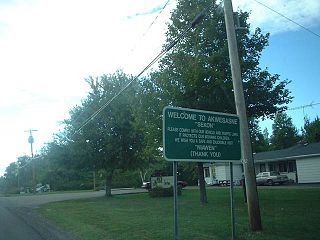
The Mohawk Nation at Akwesasne is a Mohawk Nation (Kanienʼkehá:ka) territory that straddles the intersection of international borders and provincial boundaries on both banks of the St. Lawrence River. Although divided by an international border, the residents consider themselves to be one community. They maintain separate police forces due to jurisdictional issues and national laws.

The Haudenosaunee was formed around the Great Law of Peace Kaianere'kó:wa, a constitution detailing a shared value system which informs the policy and economics of their society.

The Cayuga Nation of New York is a federally recognized tribe of Cayuga people, based in New York, United States. Other organized tribes with Cayuga members are the federally recognized Seneca-Cayuga Tribe of Oklahoma and the Canadian-recognized Six Nations of the Grand River First Nation in Ontario, Canada.

The Christian Munsee are a group of Lenape, an Indigenous people in the United States, that primarily speak Munsee and have converted to Christianity, following the teachings of Moravian missionaries. The Christian Munsee are also known as the Moravian Munsee or the Moravian Indians, the Moravian Christian Indians or, in context, simply the Christian Indians. As the Moravian Church transferred some of their missions to other Christian denominations, such as the Methodists, Christian Munsee today belong to the Moravian Church, Methodist Church, United Church of Canada, among other Christian denominations.
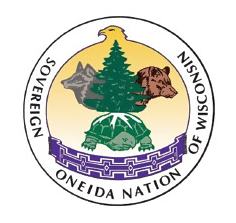
The Oneida Nation is a federally recognized tribe of Oneida people in Wisconsin. The tribe's reservation spans parts of two counties west of the Green Bay metropolitan area. The reservation was established by treaty in 1838, and was allotted to individual New York Oneida tribal members as part of an agreement with the U.S. government. The land was individually owned until the tribe was formed under the Indian Reorganization Act of 1934.
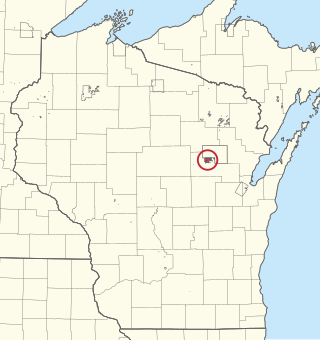
The Stockbridge–Munsee Community, also known as the Mohican Nation Stockbridge–Munsee Band, is a federally recognized Native American tribe formed in the late eighteenth century from communities of so-called "praying Indians", descended from Christianized members of two distinct groups: Mohican and Wappinger from the praying town of Stockbridge, Massachusetts, and Munsee (Lenape), from the area where present-day New York, Pennsylvania and New Jersey meet. Their land-base, the Stockbridge–Munsee Indian Reservation, consists of a checkerboard of 24.03 square miles (62.2 km2) in the towns of Bartelme and Red Springs in Shawano County, Wisconsin. Among their enterprises is the North Star Mohican Resort and Casino.

The Iroquois, also known as the Five Nations or the Six Nations and by the endonym Haudenosaunee, are an Iroquoian-speaking confederacy of Native Americans and First Nations peoples in northeast North America and Upstate New York. They were known during the colonial years to the French as the "Iroquois League", and later as the "Iroquois Confederacy". The English called them the "Five Nations", including the Mohawk, Oneida, Onondaga, Cayuga, and Seneca. After 1722, the Iroquoian-speaking Tuscarora from the southeast were accepted into the confederacy, which became known as the Six Nations.
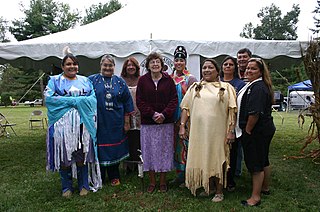
The Munsee are a subtribe and one of the three divisions of the Lenape. Historically, they lived along the upper portion of the Delaware River, the Minisink, and the adjacent country in New York, New Jersey, and Pennsylvania. They were prominent in the early history of New York and New Jersey, being among the first Indigenous peoples of that region to encounter European colonizers.
Chippewas of the Thames First Nation is an Anishinaabe (Ojibway) First Nations band government located 24 kilometres (15 mi) west of St. Thomas, in southwest Ontario, Canada. Their land base is the 3,652.60 hectares Chippewas of the Thames First Nation 42 reserve, which almost entirely surrounds the separate reserve of Munsee-Delaware 1. As of January 2014, their registered population is 2,738 people with 957 living on reserve.

